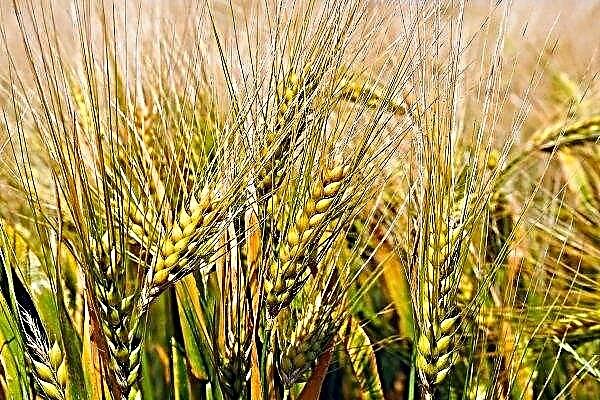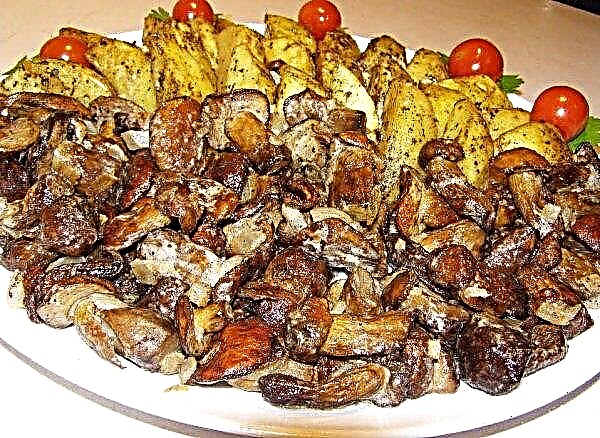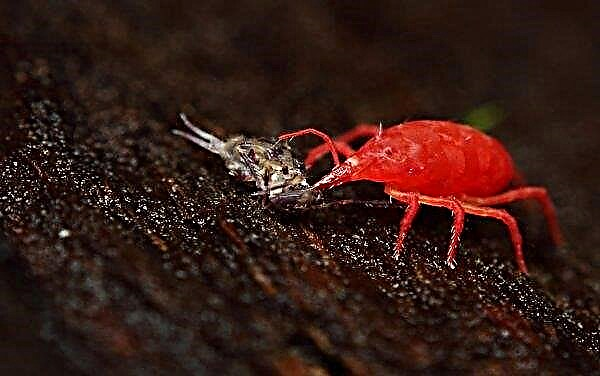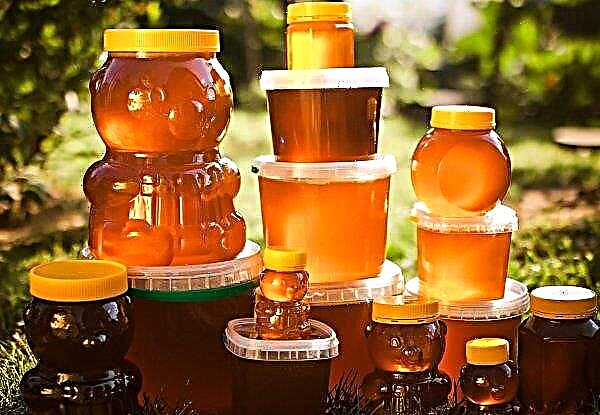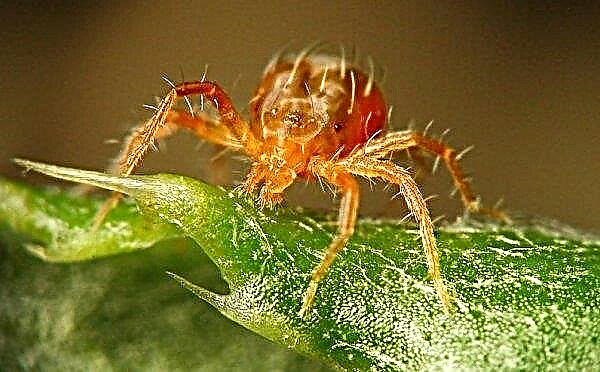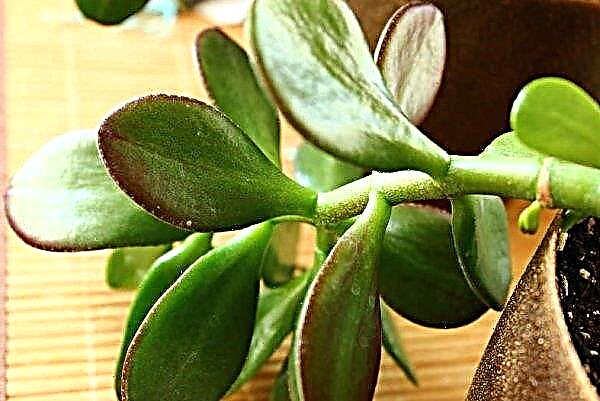Along with arborvitae and junipers, cypress trees are also often planted on the site for decorating the territory, after choosing the most suitable variety. Such a plant should not only be attractive in appearance, but also grow and develop well in a particular area, which can be achieved only with the organization of suitable care. This applies to any representative of this group, in particular pea cypress Sungold, a description and features of the cultivation of which are given below.
Botanical description of the plant
Cypress Sangold (aka Chamaecyparis pisifera Sungold or Cypress Filifera Sangold) is a dwarf ligneous plant whose height in adulthood reaches no more than 2.5–3 m, with a maximum crown diameter of about 2 m. Over the year, the length of shoots increases by only 3 cm, therefore, the plant is considered slow-growing (a ten-year-old specimen grows only up to 0.5 m in height).
The shape of the crown resembles a wide cone, although plants are also found with spherical outlines. Shoots are thin, often filiform and hang almost to the ground, evenly distributed over the entire volume of the crown.
The needles of the plant are soft to the touch and scaly, bright green in the center and golden yellow closer to the periphery. In the cold season, as when growing in shady areas, this unusual color completely disappears. Fruits - roundish, light brown cones, up to 1 cm long.
Important! Do not confuse cypresses with cypresses, although these plants really have a lot in common. The main difference between them is thicker branches and large cones with two seeds in the latter.
In general, the following characteristics can be attributed to the main characteristics of the pea cypress Sangold:
- slow growth;
- photophilousness;
- moisture lovingness and the absence of problems with short-term waterlogging of the soil at the place of cultivation;
- frost resistance of adult plants up to -29 ° C, which allows you to grow cypress in any part of the middle zone of the Russian Federation and even in some northern territories of the country;
- the possibility of growing in a gassed urban area, with regular pruning of the crown;
- the possibility of cultivation in pots.
Video: Cypress pea Sangold
Landing
Pea cypress Sangold will grow well in an open, sunny area, protected from gusts of cold wind and drafts. Since this variety is characterized by water lovingness, it is better not to plant the plant on hills, where the soil dries quickly under the influence of wind and sun.
Did you know? The homeland of cypress is considered to be the eastern part of Asia and North America, where plants were found in the wild centuries ago. However, cultural interest in them appeared only in the 18th century, and it was since then that new varietal variations of such conifers began to appear.
The optimal soil composition in the place where the cypress grows should consist of compost (or humus), peat, turf and undergrowth, which can be individually and separately poured into the planting hole, adhering to a ratio of 3: 1: 2: 2. When preparing a place for planting a plant, it is better to dig the bottom together with mineral fertilizers for conifers and only after that lay a drainage layer of broken brick (its thickness can be 10-15 cm), and then fill up the prepared nutrient mixture.

All further landing activities are carried out in accordance with the following action plan:
- Choosing a suitable seedling of cypress Sangold, waiting for the right time to plant it on the site (usually mid-spring or early autumn) and arranging a landing hole, lower the young tree in the center of such a depression and carefully straighten the roots (the root neck should rise above the surface of the substrate).
- Cover the resulting voids with the remaining nutrient substrate, pouring it into the pit in several stages so that there is no airy space between the roots.
- Level the surface, slightly compact the soil in the near-stem zone and water the plant abundantly, if possible using the method of sprinkling the crown.
- As soon as the water is completely absorbed into the ground, mulch the trunk area with a 5-centimeter layer of sawdust or pine bark, which will help retain moisture in the soil and prevent the root system from drying out.
 On this, the planting process can be considered completed, and all that remains for the gardener is to monitor the humidity of the substrate and prevent it from drying out, regularly spraying the crown of the cypress tree as well.
On this, the planting process can be considered completed, and all that remains for the gardener is to monitor the humidity of the substrate and prevent it from drying out, regularly spraying the crown of the cypress tree as well.Care
Adult plants require much less gardener attention than young, recently transplanted saplings of cypress Sangold, since they develop resistance to adverse environmental factors only with age and are rather vulnerable in the initial stages of cultivation.
Important! The more complete care will be provided to the conifer, the sooner it will start growing and will acquire maximum decorativeness for decorating the site for a long time.
The main things to pay attention to when cultivating plants of this variety are timely watering, fertilizing, loosening and mulching the soil in the near-stem zone, pruning trees and preparing the crop for winter, which is also more relevant for young crops.

Watering and feeding
Being a moisture-loving crop, the Sangold variety needs constant moistening of the substrate, and a short stagnation of moisture at the rhizome will not bring much harm, but not so with a long dry period. On hot summer days, evening spraying of the crown with well-maintained water will also be beneficial for the culture, helping to maintain the rich green color of the needles.
As for the fertilizer of coniferous plantations, in the summer period for cypresses will be useful mineral nutritional compounds, which are dissolved in water and added to the soil along with irrigation liquid (for example, 100-150 g of the Kemir composition can be scattered in the near-trunk zone, covering up to soil before watering, and dissolve in a bucket of water, so that then feed the culture while moisturizing it).Important! If fertilizers were already used when planting the cypress, then the next time feeding the conifer is not earlier than after two years of growing on the site, reducing the nutritional composition rate indicated on the package by 2 times.
 Adult trees with a developed root system can be watered less often, but it is advisable to moisten young seedlings at least 1 time in 5–7 days, spending about 10-15 l of water per instance.
Adult trees with a developed root system can be watered less often, but it is advisable to moisten young seedlings at least 1 time in 5–7 days, spending about 10-15 l of water per instance.Loosening and mulching
Loosening of the soil is usually carried out soon after the next moistening of the earth in the near-trunk zone of the cypress, however, this procedure should not be performed after each irrigation. Too frequent land cultivation can lead to mechanical damage to the root system of the conifer, which will adversely affect its further growth and development.
After loosening, you can also mulch the surface, which will save moisture after watering for a long time. As mulch, pine bark, wood sawdust or peat, laid out on the surface of the earth with a 5-centimeter layer, can be used.Important! It is best to focus on the state of the surface soil layer: if there is a dense crust, then it should be broken, making the substrate more crumbly.

Pruning
Regular forming pruning of the Sangold pea cypress is not required, but this does not mean that such a procedure is not necessary in principle. With the advent of spring, the tips of shoots affected by frost are cut from the tree, and dried, diseased or broken branches are also removed. Simultaneously with sanitary pruning, it is possible to carry out a formative procedure, thereby maintaining the natural conical shape or pyramidal nature of the crown.
Did you know? The highest cultivated cypress is considered a variety of Lavson. The trees of this plant reach a height of 60–70 m, which corresponds to the height of almost two ten-story houses.
At one time, no more than 1/3 of the total green mass of the plant should be removed so that it can recover quickly. This requirement also applies to the summer procedure, when a third of the growth of the current year is cut from the cypress to preserve the decorativeness of the crown. At the end of the pruning process, bare branches should not remain on the plant: over time, they will dry out anyway, so it is better if the crop now spends energy only on healthy leafy shoots.
 They start forming pruning no earlier than a year after planting or replanting a coniferous tree, which, however, also applies to the sanitary procedure.
They start forming pruning no earlier than a year after planting or replanting a coniferous tree, which, however, also applies to the sanitary procedure.
Wintering
When growing adult Sangold pea cypresses, all preparation for the cold season comes down to timely water-loading irrigation and mulching of the tree trunk zone. The last time in a season the cypress is watered around the beginning of autumn, spending about 20 liters of liquid per plant.
Mulching of the near-trunk zone is carried out a little later (about a month before the alleged frost) and involves covering the surface with a layer of straw or hay, 20-30 cm high. It is advisable to additionally cover the young plants with agrofibre or any other similar material that will not only warm the conifer, but also protect it is from direct sunlight in the spring, which often leave burns on the needles. Shelter organization should be carried out at a stable subzero temperature, and it should be removed after the snow has melted and the first willow or nut buds have opened, when the weather is stable and stable.
Shelter organization should be carried out at a stable subzero temperature, and it should be removed after the snow has melted and the first willow or nut buds have opened, when the weather is stable and stable.
Possible diseases and pests
Sangold pea cypress usually has good resistance to typical diseases and pests of the culture, but at the same time, one should not exclude the likelihood of the appearance of insects, spider mites, May beetles or the development of putrefactive processes on the root system or in individual aerial parts of the culture.
Typically, the cause of such problems is to ignore crop rotation rules and violate the requirements for caring for plants, but after eliminating the root cause and normalizing caring for cypress, to control pests and treat fungal diseases, it will be necessary to treat the conifers with a suitable insecticidal or fungicidal preparation. To increase the effectiveness of the treatments, they should be carried out twice, with an interval of 40-50 days.
To increase the effectiveness of the treatments, they should be carried out twice, with an interval of 40-50 days.
Suitable options for such formulations would be Fitosporin, Aktara, Actellik, Iskra, or Prestige. When using any of these tools, you need to make sure that a small number of them fall on the root neck.
The use of wood in landscape design
Due to the compact size of Sangold plants, they are successfully used in landscaping on alpine hills, in stony heather and Japanese plantings, as well as on retaining walls, along paths or near ponds near coastal zones. With container growing, the possibilities of placing cypress Sangold only increase, because the coniferous composition can be created even on the terrace or balcony of the house.
The described culture will look good in combination with other varieties of cypress trees (especially thuiform or blunted), arborvitae, yew trees, Japanese and Chinese cedars. In composition with ginkgo, thujevic, cryptomeria, rhododendrons, camellias and firs, the plant will create an excellent panorama of year-round pacifying shades. If there are no other conifers on the site, Sangold may well serve as a backdrop for other plants planted to decorate the facade of the house.
Simply put, having learned to care for the described conifer and choosing the most suitable place for growing the crop, you will get an excellent decorative element to decorate the territory at any time of the year, which does not require a lot of effort.

